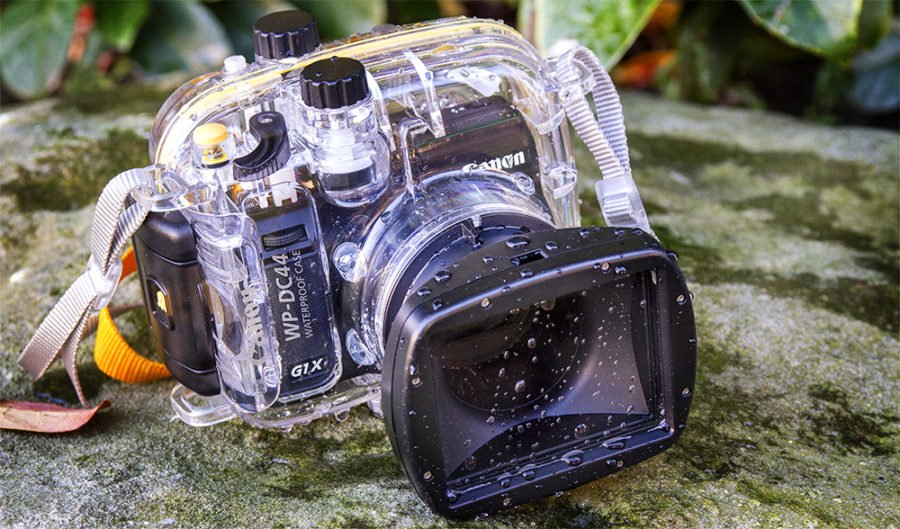Canon WP-DC44 Waterproof case

Electronics and water do not mix. When you add in sand, grit and some dust, the outdoors soon becomes a place that you nearly fear to take your regular digital camera. Luckily, camera manufacturers realize this – most brands have dedicated waterproof cameras available, albeit with tiny sensors that don’t produce the greatest images, or they offer waterproof cases for particular models. Canon’s WP-DC44 waterproof case is one excellent example.
I had actually held off buying a waterproof case for my Canon Powershot G1X compact for quite a while, preferring to throw the camera in a dry bag and hope for the best.
But, when the call came to join a rafting expedition down the Franklin River, I knew a dry bag just wouldn’t cut it; I needed the G1X to also shoot video, as well as stills, and for that, the camera would need to be out in the open, exposed to the walls of water and splashing from the Franklin’s many rapids.
The WP-DC44 is not cheap, let’s get that out of the way first. In fact, it is damn near the price of the camera itself. But, for your money, you get a professional grade waterproof case: it is rated to a depth of 40m, has a built-in flash diffusion plate (which I removed for the Franklin trip) and every conceivable external mechanical control and lever that ensures you can duplicate all the camera’s functions when it is sealed inside the WP-DC44.
The case definitely adds bulk – the camera and case combo were similar in size to my Canon EOS 7D DSLR – but it is still quite light; operationally, this suited my large hands and allowed me to hold it in a similar way to the 7D.
And it all works brilliantly – although I still had that heart-in-mouth moment when it first got wet – and then dunked – in the Franklin’s tannin-tinged water.
After that, it was all too easy; each morning of our Franklin River trip, I would hand over the G1X, safely ensconced in the WP-DC44 to either Oscar or Victor (the two rafting guides who alternated in the accompanying kayak). They would then shoot stills and video for me whenever the chance arose.
I also used the camera inside the case during the trip and found it actually very intuitive in use, in regards to the external buttons and levers, and in the removal and re-insertion of the camera each evening.
In terms of maintenance, the case’s seals need to be checked for any grit before re-closing the case, and they also need lubrication occasionally, but that pretty much the only maintenance you need to perform. The seals should last for years, but Canon does offer replacement seals.
I was so impressed with the WP-DC44’s performance in a liquid environment, I am super keen to see how it goes in the outback, with all its dust, wind and sand – really, you can keep the G1X inside the case forever if you so desire.
For any adventurer who enters these potentially camera-damaging environs, I would thoroughly recommend one of these cases. Canon makes them for most of their compact camera range and, even though they are not cheap, the benefits – and assurance – of one of these cases does balance out the expense.
RP $450 www.canon.com.au

